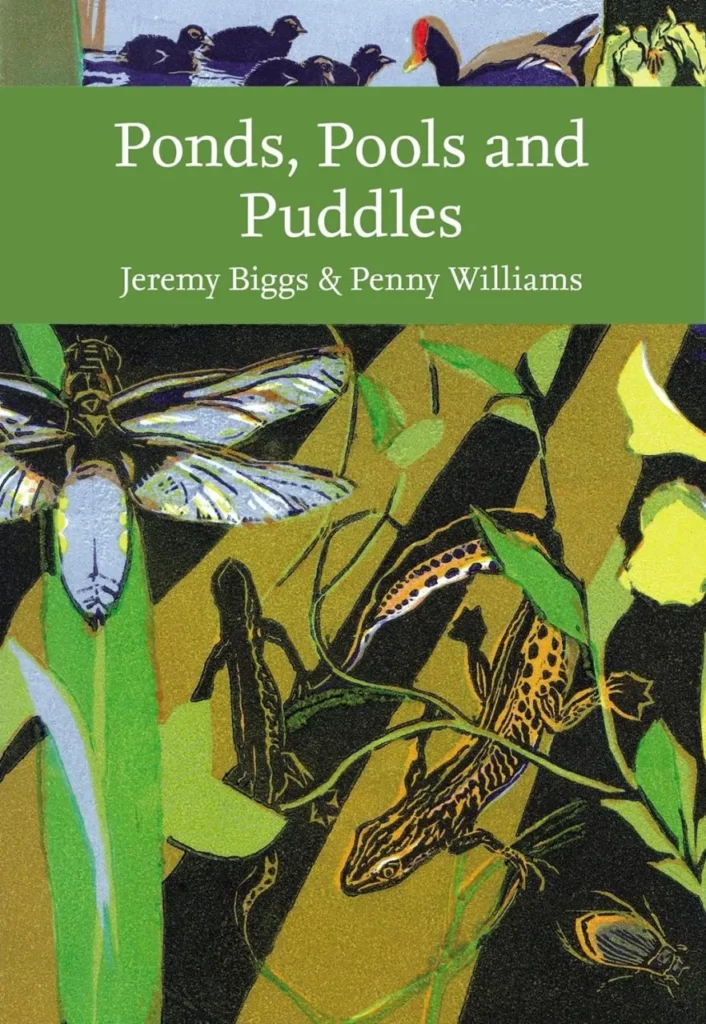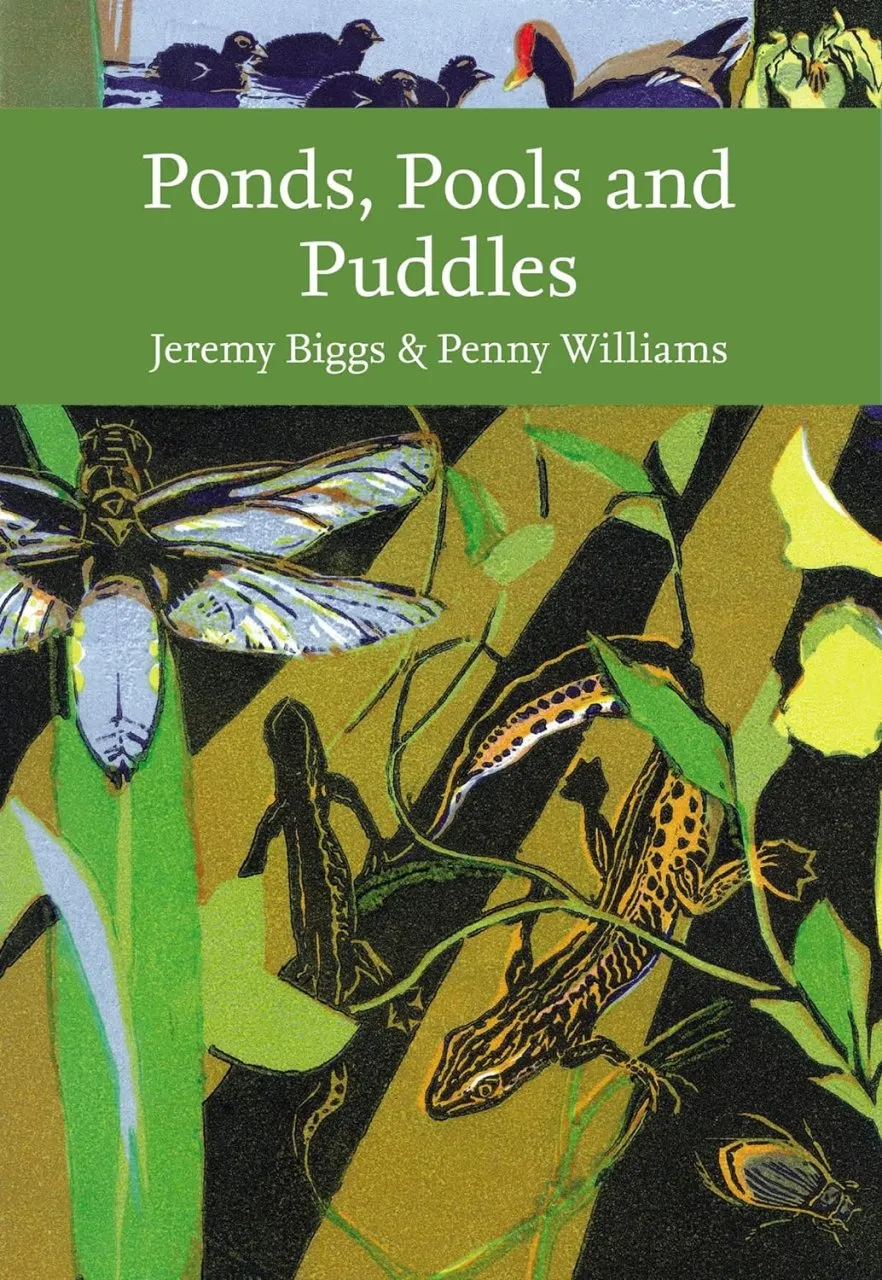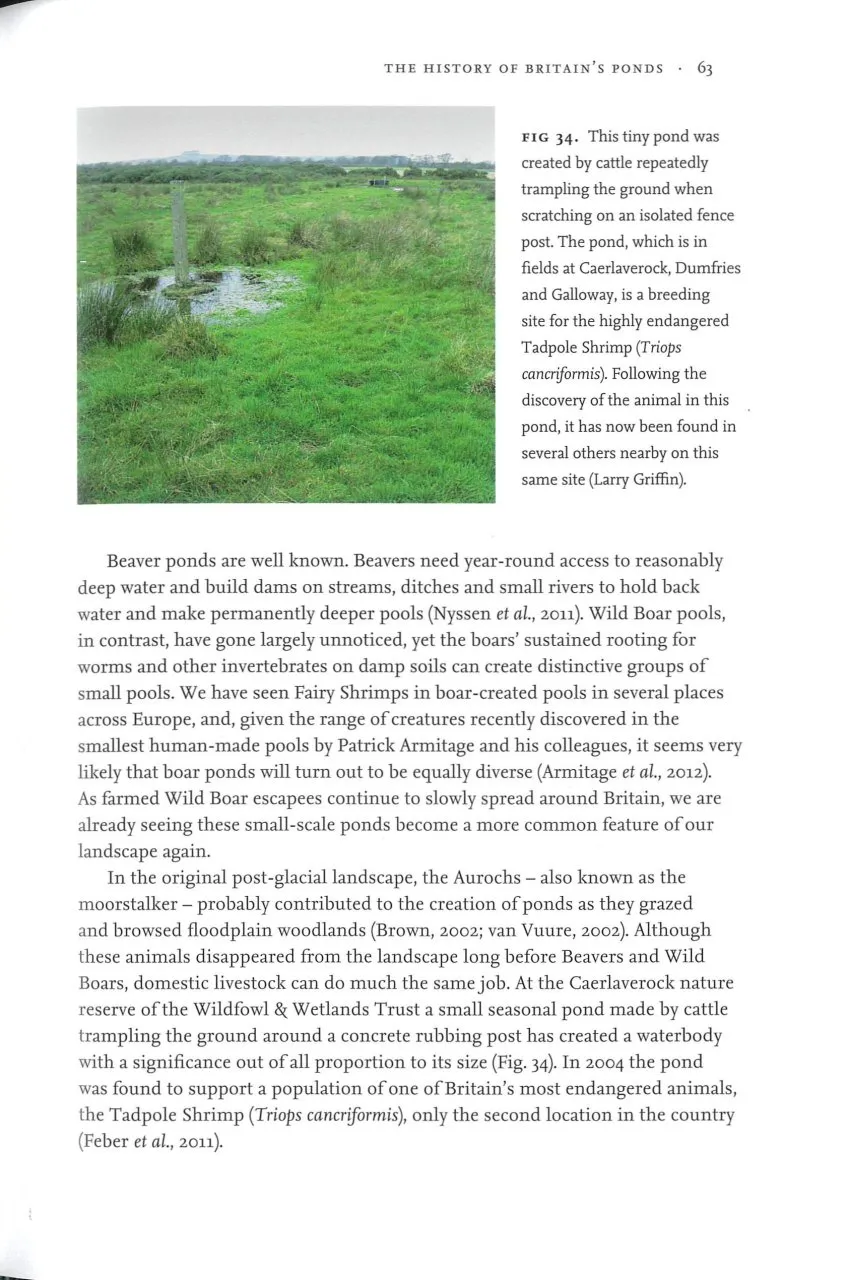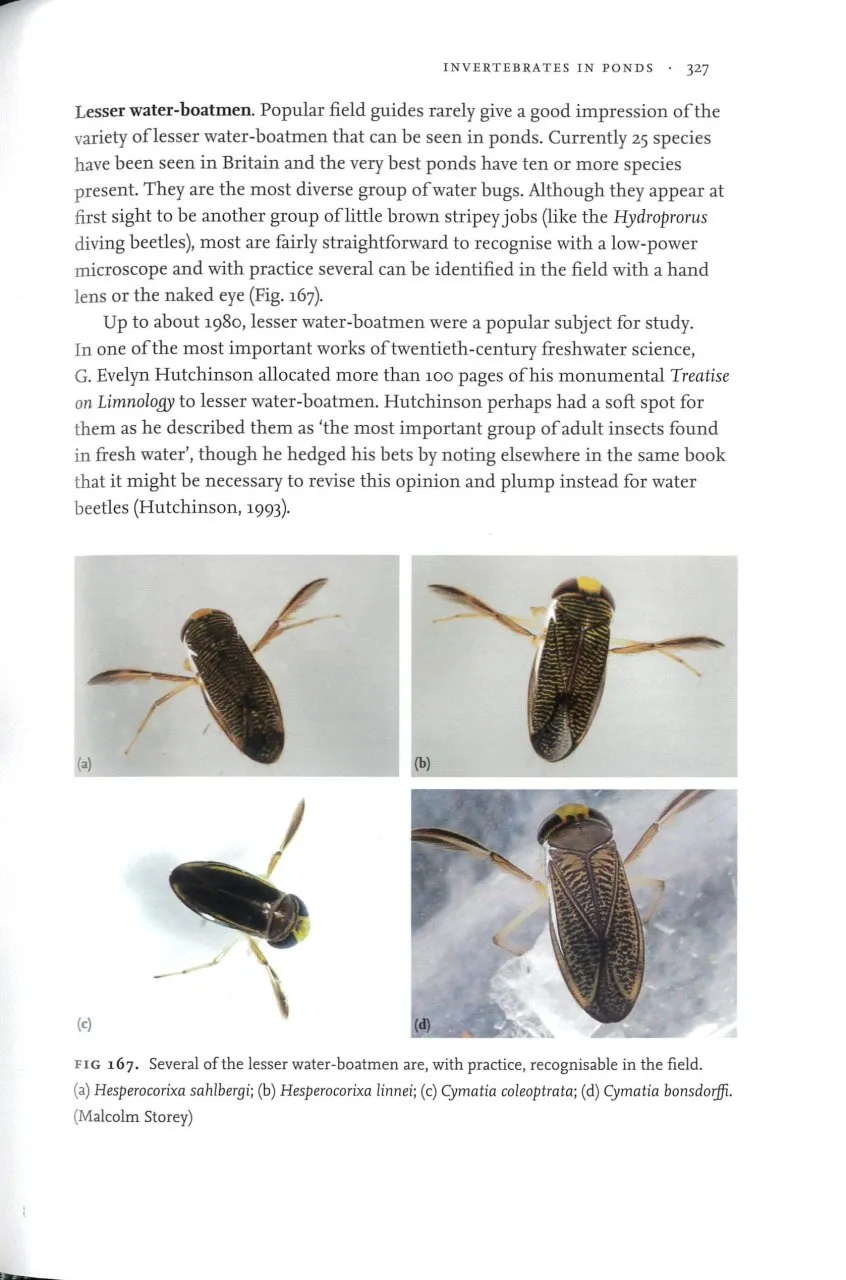This very welcome addition to the New Naturalist series has been a long time coming. Ponds, Pools and Puddles was first mooted as a title in the 1950s, together with a prospective author (Alister Hardy), a dust jacket and watercolour sketches. However, it was not to be. Only after several decades in abeyance was the baton taken up again by the present authors. It has been worth the wait. Jeremy Biggs and Penny Williams have produced a tour de force, incorporating a huge amount of evidence about pond ecology, most of which was unknown in Hardy’s time.
View this book on the NHBS website
Perhaps inevitably, the book starts with various proposed definitions of what a pond is, eventually settling on one of the authors’ own making. This is followed by chapters on ancient ponds and their evolution, possibly the habitats where life originated; a history of British ponds, natural and man-made; and a comparison of pond ecology with that of other freshwater habitats including lakes, rivers, streams and ditches, while emphasising the high biodiversity in ponds. Thereafter the text focuses specifically on ponds, with chapters on various types based on differences in chemistry (especially pH), physical features such as depth and degree of shade. The importance of temporary ponds is highlighted, and there is welcome information about how plants and animals move within the pondscape. This topic has long fascinated limnologists, particularly in the cases of fish and sedentary species such as pond snails. The authors offer some fascinating insights on this subject from the monitoring of colonisation of ponds created anew for ecological study. Unsurprisingly, some species such as pollen-producing plants and flying insects such as dragonflies turned up quickly, while more sessile invertebrates took much longer. Then come chapters on specific groups, notably plants, invertebrates, amphibians and, pooled together, fish, birds and mammals. Most of these groups include large numbers of species, so that inevitably not everything gets a mention. A puzzling omission was that of the Arachnida; there is next to nothing on the Water Spider or raft spiders, or on water mites. I assume that this was an accidental omission. Nevertheless, there is exhaustive coverage of other groups, including algae, macrophytes, flatworms, leeches, crustaceans, molluscs, dragonflies and damselflies, water bugs, mayflies, water beetles, caddisflies, stoneflies, true flies, moths, and small jobs – cladocerans, copepods, ostracods and rotifers.
The ongoing impact of pollution on pond biota, mainly from agrochemicals, is a recurrent theme and the sad history of pond losses in the 20th century is recounted. It is heartening, however, to learn that creation of new ponds is gaining ground, this partly due to the Million Ponds Project, with encouragement from the Freshwater Habitats Trust. The authors also highlight the need for more research, with examples of where information is still incomplete. Why are strong fliers, such as the Great Silver Water Beetle, so restricted in their distribution?
The text is very data-rich and I should have liked to see a bit more casual material, for example on the engagement of children with the joys of pond dipping. But this cannot distract from the importance of this well-produced and comprehensive volume which is certain to be a standard text for many years to come.




